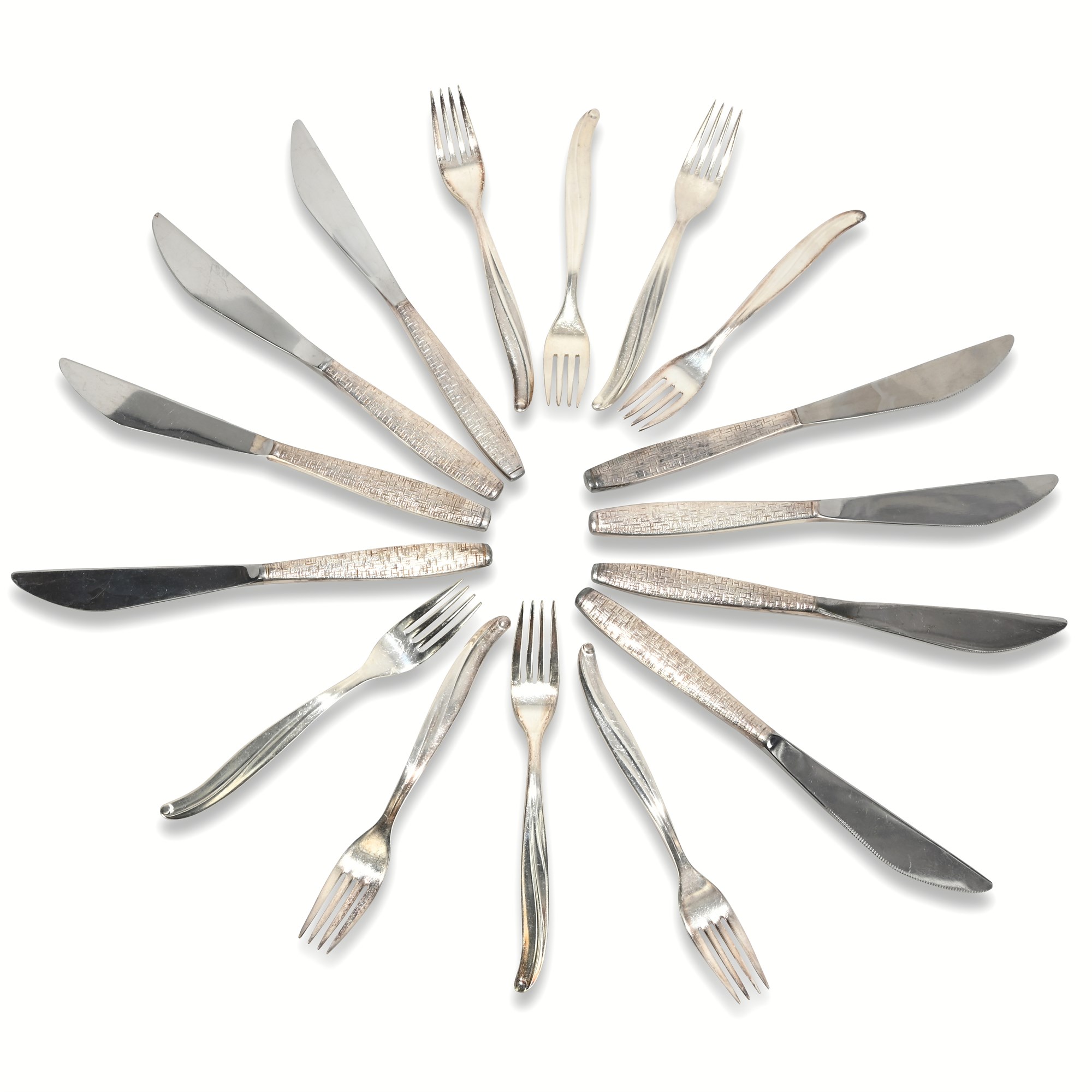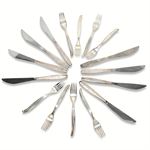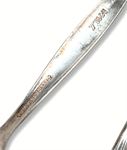Vintage TWA Flatware Collection View Watchlist >
- Winning Bid: $12.00
- 12 Bid(s) View Bid History
- High Bidder: ralph
Seller Accepts Credit Cards
Payment and pickup instructions will be available on your invoice (under "My Account") at the conclusion of this auction.
Lot # I154
System ID # 18630312
Start Date
End Date
0 Watching
Vintage TWA Flatware Collection
Add a touch of aviation history to your collection with this set of vintage Trans World Airlines (TWA) flatware. This vintage set consists of 16 pieces, including eight 7.75-inch butter knives and eight 6-inch forks, each form embossed with the TWA logo, a nod to the airline’s golden era of travel.
Contents:
- Forks: 8 silver-plated forks, 6 inches each.
- Butter Knives: 8 silver-plated butter knives measuring 7.75 inches each.
- Branding: Each fork is marked with the "TWA" emblem, celebrating its rich heritage.
Condition: The flatware shows good condition with signs of use. We have left the polishing to you, allowing for either a vintage patina finish or a restored shine based on your preference.
Size: 16 pieces in total, providing a complete set for collector display or functional use.
The golden age of air travel, spanning from the 1950s to the early 1970s, is often remembered as a time of unmatched glamour and elegance in the skies. This period marked a significant shift in the way people traveled, transforming air travel from a luxury only the wealthy could afford into a more accessible means of transportation for the middle class, thanks to the advent of the jet engine and the subsequent decrease in travel costs.
Luxury and Service
During the golden age, flying was an event, an occasion dressed for by passengers. Airlines, keen on outdoing each other in terms of service and comfort, turned their cabins into lounges with plush seats, more legroom, and sophisticated decor that included curtains and carpeting. The experience was akin to what might be found in a cozy restaurant or private club, complete with attentive cabin crews and well-dressed flight attendants who served as both hosts and safety personnel.
Gourmet Dining in the Skies
One of the hallmarks of this era was the emphasis on in-flight dining. Meals served on board were not just food; they were culinary events. First and business class menus rivaled those of fine dining establishments, featuring multiple courses with choices of entrées, elaborate desserts, and a selection of fine wines and spirits. Silver service was standard, with food often plated on real china, accompanied by glassware and linens.
Example Menus
Menus during the golden age were expansive. Passengers might start with a choice of hors d'oeuvres, such as smoked salmon or caviar, followed by gourmet soups and salads. Main courses could include options like chateaubriand, lobster thermidor, or exotic dishes from the airline’s destination regions, reflecting a cosmopolitan flair. Desserts were an affair of their own, often comprising a selection from a dessert cart brimming with cheeses, fruits, and decadent pastries.
TWA and Its Culinary Reputation
Trans World Airlines (TWA), one of the iconic carriers of this era, exemplified the luxury dining experience in the sky. Under the leadership of Howard Hughes in its early years, TWA set high standards for its meal services. Its Ambassador Class offered a specially curated dining experience that included celebrity-chef-designed menus and even featured carved meats and freshly prepared meals onboard. TWA’s dedication to providing a superior customer experience was evident in its attention to every detail, from the presentation of meals to the selection of top-tier ingredients.
Legacy
The golden age of air travel has left a lasting legacy on how commercial aviation is perceived today. Although modern air travel has become more utilitarian due to economic and practical reasons, the echoes of its glamorous past continue to inspire airlines that still offer luxury services. More importantly, it set standards for hospitality and customer service that remain benchmarks in the industry.
In an era where the journey was as important as the destination, the golden age of air travel reminds us of a time when the skies were not just a route to travel but a place where flying was a part of the adventure.




